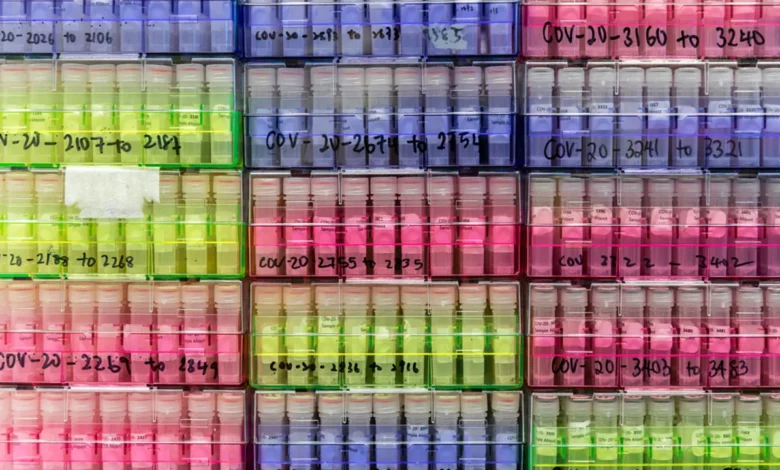
The new variant, called BA.2.86 and nicknamed Pirola by variant hunters on social media, has more than 30 amino acid changes to its spike protein compared with its next closest ancestor, the BA.2 subvariant of Omicron, according to Dr. Jesse Bloom, who studies viral evolution at the Fred Hutchinson Cancer Center in Seattle.
“This makes it an evolutionary jump comparable in size to that which originally gave rise to Omicron,” Bloom posted on his lab’s website.
The World Health Organization designated BA.2.86 a “variant under monitoring” on Thursday, a designation that encourages countries to track and report the sequences they find.
A variant under monitoring that causes more severe disease or evades existing vaccines or treatments can be upgraded to WHO’s list of variants of interest or variants of concern. XBB.1.5, XBB.1.16 and EG.5 are listed as variants of interest. WHO has not designated any variants of concern.
Only six sequences of BA.2.86 have been reported in four countries, but epidemiologists are worried they could represent many more because worldwide monitoring of variants has dropped off.
The variant was spotted by scientists in Israel on Sunday. Since then, Denmark has reported three sequences. Two more sequences were reported in United States and in the United Kingdom, respectively.
“It is unusual for corona to change so significantly and develop 30 new mutations. The last time we saw such a big change was when Omicron appeared,” said Morten Rasmussen, a senior researcher at the Statens Serum Institut, in a news statement on the variant.
The three cases in Denmark are in people in different parts of the country who do not appear to have had contact with each other, according to the institute.
SSI scientists stressed that it’s still too early to say anything about the severity or contagiousness of the new variant. They are in the process of growing the virus variant to test it against human antibodies.
Dr. Mandy Cohen, director of the US Centers for Disease Control and Prevention, said Friday that the new variant shouldn’t be cause for alarm.
“I think what we are seeing is our detection mechanisms that we’ve put in place are working, right?” she told CNN. “We are more prepared than ever to detect and respond to changes in the Covid-19 virus.
“We are tracking this new lineage. It has mutations that do make it distinct from other lineages circulating. And then the question becomes, what does that mean?” Cohen said. “Is it going to increase? Are we going to see more cases? Or is it going to fizzle out and not be a variant of concern?”
In a new threat assessment on the variant Friday, the UK’s Health Security Agency said that the fact that these sequences are in four different countries in people without recent travel histories “suggests that there is established international transmission.”
The sequences that have been found are very similar to each other, which may indicate that they emerged recently and are spreading quickly, the report says, though the UKHSA notes that it has low confidence in this assessment until more sequences become available.
Researchers at the University of Michigan, the lab that found the sequence from the US, gave no information about the patient it came from, saying the case was being investigated by the state’s health department.
In March, the White House quietly polled about a dozen Covid-19 experts who follow the evolution of the coronavirus to ask about the likelihood of a highly mutated variant emerging within the next two years. Most experts pegged the odds of that happening somewhere between 10% and 20%.
The XBB descendant EG.5 is currently the dominant variant in the US, causing an estimated 20% of all new Covid-19 cases in this country. The next most common variant, FL.1.5.1, has grown quickly and is now causing about 13% of all new cases, according to the CDC’s variant tracker.




